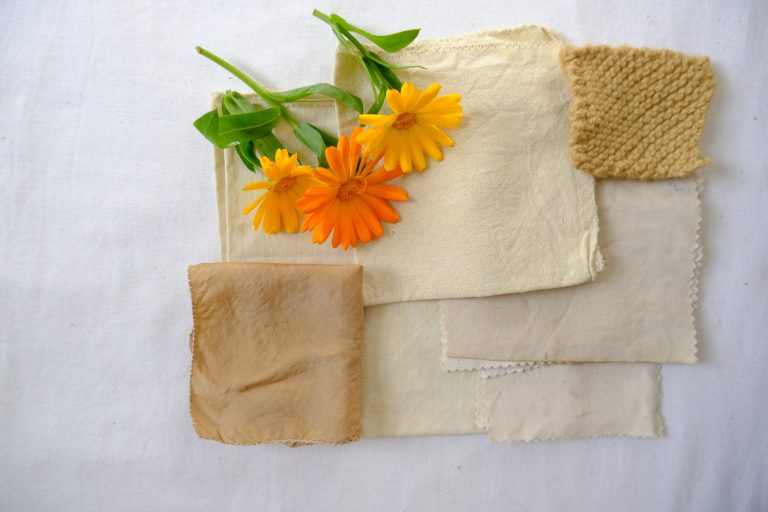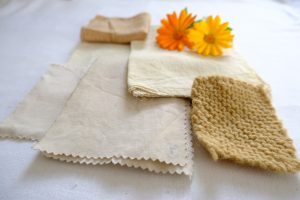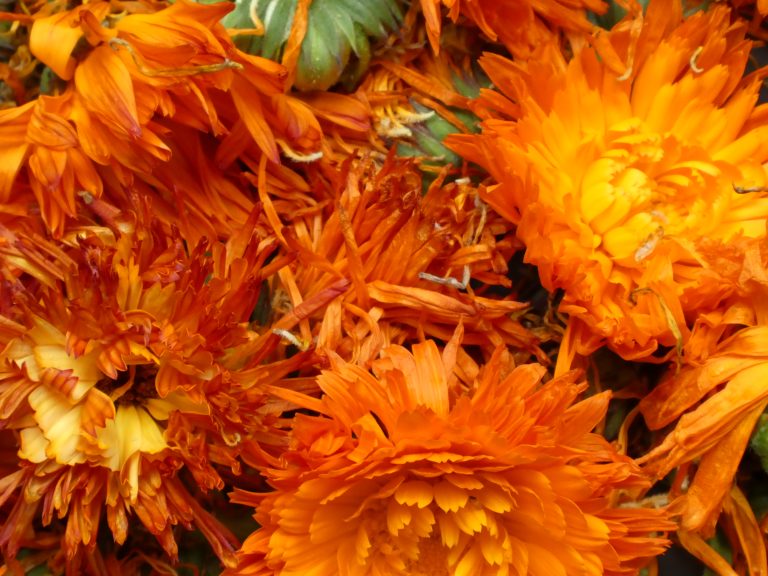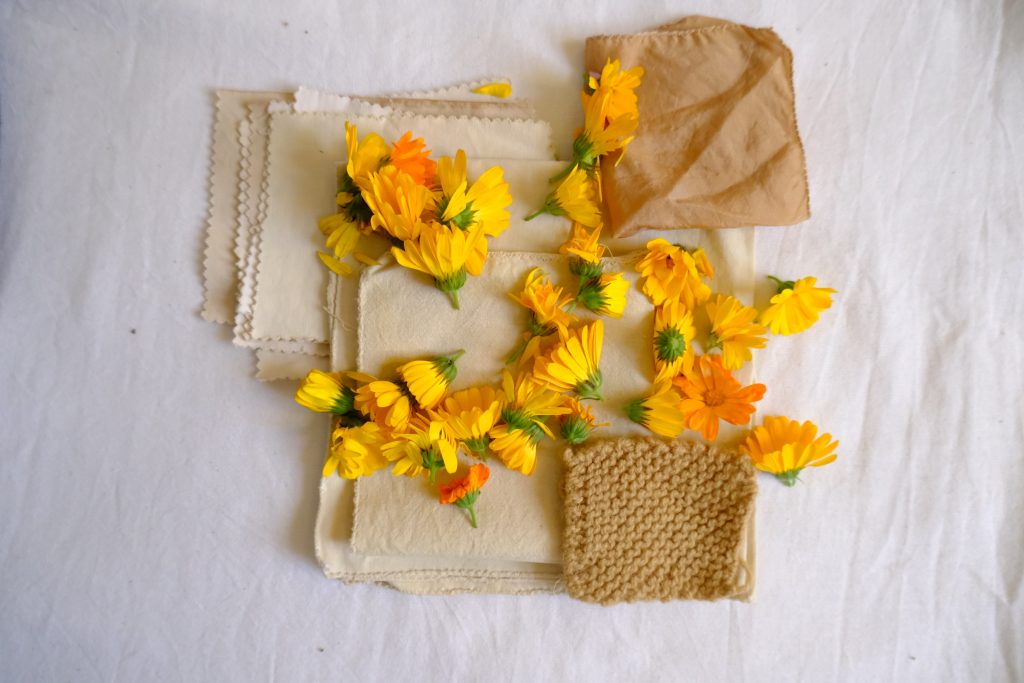Calendula or Marigolds are prolific growers and delight us all summer long. They are very simple to grow and it’s easy to collect the seeds to provide future free crops.
Due to their abundance it’s easy to collect enough for the dye bath – you can dry or freeze them till you’ve collected the amount you need. Like most plant material you will need approximately the same weight of plant material to match the weight of fibre you intend to dye. If you are using dried flowers, half the weight of plant material should be sufficient.
French and African marigolds are both members of the Tagetes family and can be used in the same way as Calendula flowers.

* If you are not familiar with the basics of natural dyes, we recommend you to read our Natural Dyeing Notes here
Historically, calendula was often used for magical purposes due to its antifungal, anti-inflammatory, and antibacterial properties.
There are different ways that you can extract pigment from any Marigolds.
Iced method
You can submerge frozen flower heads into warm water. I usually use a gauze bag to contain the flower heads and this makes it very easy to squeeze out as much colour as possible and avoids the need for further straining. I would usually leave the flower heads in the liquid overnight.

Here are the steps to make a calendula hot dye
Step 1
After weighing out your flowers place them in a pan and add just enough water to cover. Aim to have at least an equal weight of flowers to fibre, if using fresh. Leave to soak overnight.

Step 2
Gently heat up your soaked flowers until a low simmering point is reached. Maintain that temperature for about 30 minutes. Remove from heat and allow to soak overnight.

Step 3
Strain through a sieve lined with gauze back into your dye pan.

Step 4
Add your pre-wetted fibres into the dye and gently heat until a gentle simmer is reached. Maintain the heat, stirring occasionally until you are happy with the colour. Turn off the heat and leave the fibres in the pan to soak overnight, if you want the colour to deepen.



Notes prepared by Katrina Barnish for Sewing Café Lancaster/// sewingcafelancaster@gmail.com